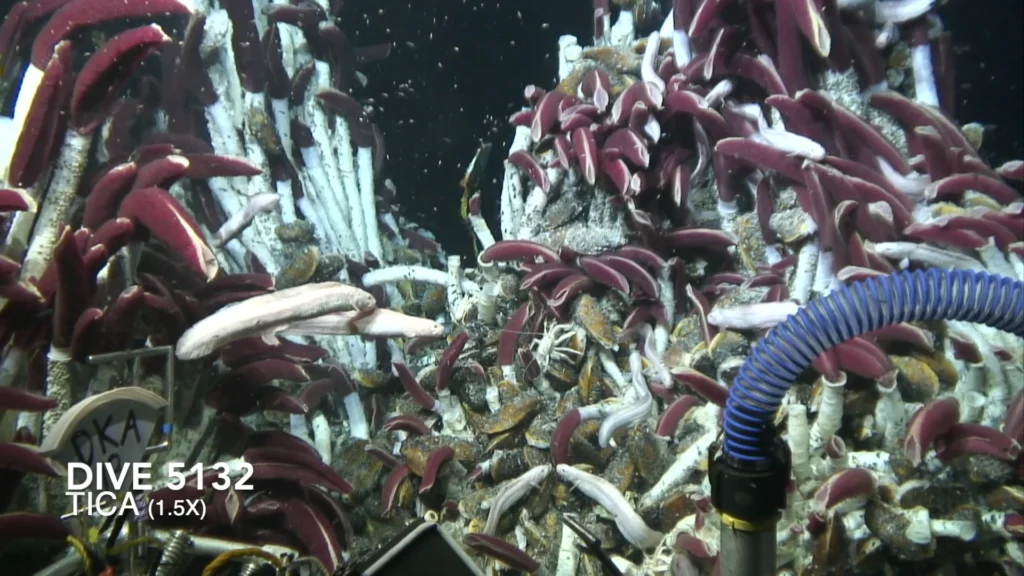Join us in our expedition to deep-sea hydrothermal vents at the East Pacific Rise where we study the formation of biological communities in this extreme environment.

Prior to the discovery of hydrothermal vents, it was thought that no life could exist at the bottom of the ocean. However, the scientific world was shocked in 1977 to discover groups of exotic animals living at deep-sea volcanoes. These volcanoes are known as hydrothermal vents, which spew out plumes of sulfur and methane, chemicals that are traditionally toxic to life forms. This vent fluid reaches temperatures that measure over 700°F. At the very bottom of the ocean, these vents contain no sunlight, yet life persists and thrives there. Microbes form the foundation of vent ecosystems, and to survive in a toxic environment without sunlight microbes undergo chemosynthesis, the process of converting chemicals into nutrients. Large communities of microbes coat surfaces at these vent sites, which are known as microbial biofilms. Biofilms give larger animals a suitable place to live. All other vent organisms rely on this biofilm for survival. What is unknown, however, is how animal larvae know to land on the biofilm.
